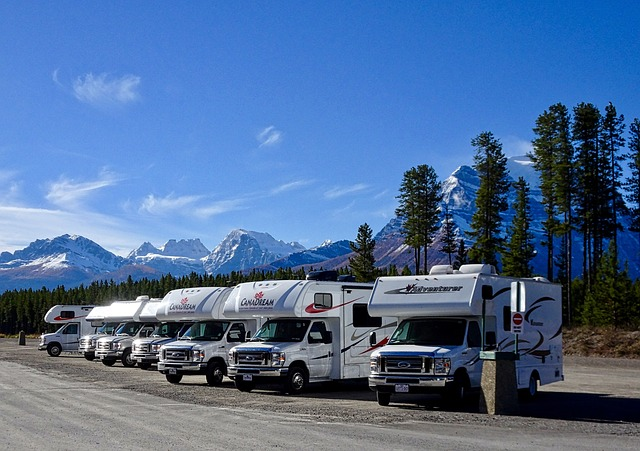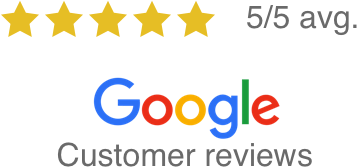Imagine cruising down the highway in your recreational vehicle (RV), enjoying the freedom of the open road, when suddenly an unexpected event leads to an accident. RV accidents can be more severe than those involving regular cars due to their size and weight. To ensure a safer journey, it’s essential to understand what are the most frequent types of accidents involving recreational vehicles (RVs) and how to prevent them. In this blog post, we will explore the top causes of RV accidents, essential safety precautions for RV drivers, how to respond to an RV accident, common injuries resulting from RV accidents, and tips for sharing the road with RVs.
Key Takeaways
- RV accidents are often caused by driver fatigue, blind spots, high winds and improper weight distribution.
- Essential safety precautions include adhering to speed limits, properly maintaining the vehicle and planning routes ahead of time.
- When sharing the road with RVs be aware of their blind spots and give them plenty of space when turning or changing lanes.
Top Causes of Recreational Vehicle Accidents

The five most common causes of RV accidents are:
- Driver fatigue
- Blind spots
- High winds
- Improper weight distribution
- Inexperienced drivers
Awareness and prevention are key to reducing these accidents. RVs, such as motorhomes, travel trailers, camper vans, toy haulers, and fifth wheels, are larger and heavier than average passenger vehicles, making accidents involving them potentially more severe. A grasp on these common causes and the application of proper safety precautions can assist RV drivers in minimizing the risk of accidents, ensuring a safer journey for themselves and others on the road.
Taking regular breaks, adjusting mirrors to cover blind spots, driving at slower speeds during high winds, understanding weight ratings, and taking an RV driving course are all essential steps to prevent accidents. It’s also vital to keep up with maintenance on your RV, as it helps prevent equipment failure and potential accidents.
The subsequent sections provide a deeper understanding of each cause, discussing how RV drivers can evade these situations involving other drivers.
Driver Fatigue
Driver fatigue is a significant cause of RV accidents. When drivers are tired, their reaction times are slower, judgment is impaired, and awareness is reduced, all of which can increase the likelihood of an accident. To combat fatigue, RV drivers should take breaks and get the right amount of rest. There are several options for a free place to stay overnight, such as rest areas, truck stops, and some businesses that allow RVs to park in their lots.
In addition to getting proper rest, RV drivers should increase their stopping distance to accommodate the heavier weight of their vehicle. This helps prevent sliding through stop signs or red lights and reduces the risk of colliding with other vehicles. Drivers can greatly mitigate the risk of fatigue-induced accidents by taking breaks and maintaining a safe stopping distance.
Blind Spots
Blind spots in RVs can lead to accidents, such as an RV crash. The blind spots in a typical RV are larger than those in a car, and RV drivers must be aware of these areas when changing lanes or navigating in traffic. To avoid collisions, RV drivers should adjust their mirrors correctly and learn how to use them effectively.
When selecting mirrors for an RV, drivers should look for mirrors with the following features:
- Convex mirrors
- Vertical adjustment
- Telescopic arms
- Independent adjustability
These features can help RV drivers minimize blind spots and prevent accidents.
Navigating the road safely and reducing the risk of collisions can be achieved by RV drivers when they’re behind the wheel, cognizant of their blind spots, and make effective use of their mirrors.
High Winds
High winds can cause RVs to sway or lose control, leading to accidents. To prevent accidents caused by strong winds, RV drivers should avoid driving on windy days, slow down when encountering strong winds, and choose back roads instead of highways when winds are over 20 mph.
If staying off the road is not possible, driving at a slower pace is essential to prevent accidents. Lightweight rigs, in particular, are more susceptible to being tossed around or veering off the road in windy conditions.
Minimizing the risk of high-wind accidents can be achieved by RV drivers through awareness of weather conditions and corresponding adjustments to driving habits.
Improper Weight Distribution
Improper weight distribution in an RV can lead to accidents, such as trailer sway or even violent tossing of the trailer back and forth, potentially resulting in an RV crash. To avoid these issues, RV drivers should understand the Gross Vehicle Weight Rating (GVWR) and ensure they are not exceeding it. Checking the tires and axles of the tow vehicle and trailer is also important to make sure they are not dealing with an overloaded RV.
Proper weight distribution is crucial for safe RV travel. Stopping at a CAT scales location to weigh your RV can help ensure an even distribution of weight and prevent potential accidents. RV drivers can mitigate accident risks and ensure vehicle safety by maintaining proper weight distribution.
Inexperienced Drivers
Inexperienced drivers are more likely to cause RV accidents. Driving an RV is different from driving a car, as they are longer, heavier, and require more room to turn and stop. To improve driving skills and safety, inexperienced RV drivers should consider taking an RV driving course and practicing before hitting the road.
Inexperienced drivers can avoid mishaps and ensure a safer journey by investing time in learning safe RV operation and practicing these techniques. With the proper training and experience, RV drivers can navigate the road confidently and minimize the risk of accidents.
Essential Safety Precautions for RV Drivers

In addition to understanding the common causes of RV accidents, it’s important for RV owners to recognize that RV accidents occur and there are several essential safety precautions that RV drivers should follow. Adhering to speed limits, maintaining their vehicle, and planning routes carefully can help RV drivers avoid dangerous situations and minimize the risk of accidents.
We will delve into each of these precautions with more detail in the subsequent subsections.
Speed Limits
Following speed limits and adjusting speed based on road conditions and weather is crucial for preventing RV accidents. Speed plays a major role in accidents, as it increases the energy involved in a collision, leading to more severe injuries. Furthermore, higher speeds make accidents more likely to happen. RV drivers should be aware of the speed limit laws for RVs in each state they travel through and adjust their speed accordingly.
In addition to adhering to speed limits, RV drivers should also give themselves extra space when braking to accommodate the heavier weight of their vehicle. Maintaining a safe stopping distance helps prevent collisions and ensures a safer journey for all on the road.
Vehicle Maintenance
Regular vehicle maintenance is essential for ensuring the safety and smooth operation of an RV. This includes checking tire pressure, brakes, and oil changes. The ideal tire pressure for RVs depends on the weight and load of the vehicle, and it is important to consult the manufacturer’s load chart to determine the correct PSI for each tire position.
In addition to tire pressure, RV drivers should also:
- Check their brakes annually to ensure they are functioning properly
- Perform regular oil changes to keep the engine running smoothly and efficiently, boosting performance and extending its life
- Conduct regular maintenance checks to ensure their vehicle is in good working condition, thereby reducing accident risk.
Route Planning
Route planning is an important aspect of safe RV travel. By planning their route ahead of time, RV drivers can avoid tight turns, construction zones, and hazardous weather conditions that could increase the risk of accidents. When planning a route, drivers should consider factors such as weather forecasts, road conditions, and satellite views to ensure the safest route possible.
Additionally, drivers should check for low clearance bridges and routes that might take them through busy city centers to ensure the safety of their recreational vehicles. RV drivers can mitigate accident risk and ensure a safer journey by meticulously planning their route and taking these factors into account.
How to Respond to an RV Accident

In the unfortunate event of an RV accident, knowing how to respond can make all the difference. The appropriate steps to take include:
- Contacting emergency services
- Documenting the scene
- Seeking legal assistance to navigate the claims process and ensure fair compensation for damages and injuries.
These steps will be discussed with more detail in the subsequent subsections.
Contact Emergency Services
In the event of an RV accident, it is crucial to contact emergency services immediately. Emergency services play a vital role in:
- Providing quick medical help
- Evaluating injuries
- Administering treatment at the accident scene
- Working with other emergency personnel to manage the accident site
- Ensuring the safety of everyone involved
When contacting emergency services, remain calm and provide as much information as possible, including your location, the number of vehicles involved, any injuries or medical conditions, and any immediate hazards or dangers at the scene. Contacting emergency services promptly can help ensure that everyone receives the necessary medical attention and that the accident scene is managed safely and efficiently.
Document the Scene

Documenting the scene of the accident is crucial for supporting any potential insurance claims or legal proceedings. To document the scene, you should:
- Take photos of interior and exterior damage
- Capture skid marks, road conditions, road debris, license plates, and other relevant details
- Gather contact information from witnesses
- Record any admission of liability from the other driver, if applicable
Ensure that you have all the necessary evidence to support your case.
Having thorough documentation of the accident scene can strengthen your claim and provide visual evidence that supports your case. Documenting the scene and gathering witness statements can equip you with the necessary information to pursue compensation for potential damages and injuries from the accident.
Seek Legal Assistance
After an RV accident, seeking legal assistance from an experienced personal injury lawyer can be invaluable in navigating the claims process and ensuring fair compensation for damages and injuries. A personal injury lawyer can:
- Assess the damages and liability
- Collect evidence
- Consult with experts
- Determine medical expenses
- Construct a solid case
To find a qualified personal injury lawyer, you can follow these steps:
- Research their experience and qualifications.
- Ask for referrals from friends and family.
- Read online reviews.
- Ensure they are licensed to practice in your state.
- Make sure they have experience handling RV accident cases.
Find a lawyer who is well-suited to handle your personal injury case.
A skilled lawyer’s assistance can guide you through the claims process, ensuring that you receive deserved compensation.
Common Injuries Resulting from RV Accidents

RV accidents, sometimes referred to as RV crashes, can result in a variety of injuries, including whiplash, broken bones, head injuries, and internal injuries. These injuries can have serious long-term effects, such as traumatic brain injuries that can affect cognitive function, memory, and personality, as well as mood disorders, cognitive impairments, and an increased risk of neurodegenerative diseases. Understanding RV accident statistics can help raise awareness and promote safety measures to prevent such incidents.
Seeking immediate medical attention is crucial for proper treatment and recovery. Prompt medical help and adherence to healthcare professionals’ advice can enhance the recovery chances for individuals involved in RV accidents and minimize their injuries’ long-term effects.
Tips for Sharing the Road with RVs

Sharing the road with RVs can be a challenge, but with patience and understanding, drivers can ensure safe driving for all. To safely share the road with RVs, give them plenty of space, be patient when they make turns or change lanes, and be aware of their blind spots. Doing so can contribute to accident prevention and a safer driving environment for all road users.
Additionally, it is essential to recognize that many RV drivers, including the responsible RV driver, also have a responsibility to drive safely and courteously. The adherence to safety precautions and tips discussed in this blog post can help RV drivers mitigate accident risks and ensure a safer journey for themselves and others on the road.
Summary
Understanding the common causes of RV accidents and taking appropriate safety precautions can significantly reduce the risk of accidents and ensure a safer journey for RV drivers and others on the road. By following speed limits, maintaining vehicles, planning routes, and practicing safe driving habits, RV drivers can minimize accidents and enjoy the freedom and adventure of RV travel. Remember, safety should always be the top priority when hitting the open road in your recreational vehicle.
Frequently Asked Questions
Which of the following is a cause of RV accidents?
Speed is a major cause of RV accidents, both from driving over the speed limit and from driving too fast for conditions.
What is the most common type of accident?
Head-on collisions are the most common type of accident, with two vehicles colliding head on. In 2019, there were 2.8 million front impact collisions compared to 1,570,000 rear impact collisions. Victims of these accidents often suffer fatal injuries. Rear-end collisions also occur frequently and are not always caused by the driver in the back.
How often do RVs crash?
RV crashes happen quite often, with around 76,000 reported per year according to the National Highway Traffic Safety Administration (NHTSA). However, this is still far less than the amount of passenger vehicle accidents.
What safety precautions should RV drivers take to avoid accidents?
RV drivers should stay aware of speed limits, keep up with vehicle maintenance, plan their routes carefully, and drive defensively to avoid any accidents.
How can drivers share the road safely with RVs?
Give RVs plenty of space, be patient, and be aware of their blind spots to share the road safely with RVs.
100% secure & confidential.

